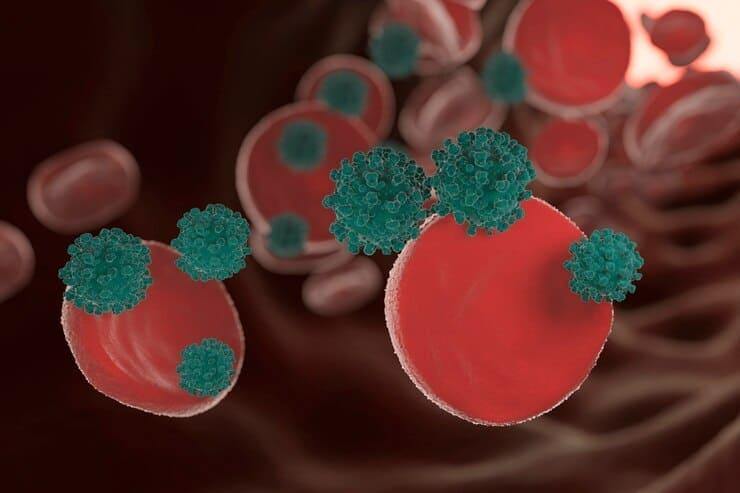KEY TAKEAWAYS
- The COMMANDS phase III trial aimed to evaluate additional clinical benefits of luspatercept in LR-MDS pts.
- The primary endpoint was RBC-TI for at least 12 weeks. Additional endpoints were response, duration of response, and TB reduction.
- The study demonstrated promising efficacy in ESA-naive TD LR-MDS, warranting further investigation as a new treatment standard.
Luspatercept effectively reduced transfusion dependence in Transfusion‑Dependent(TD) Lower‑Risk Myelodysplastic Syndromes(LR-MDS). Researchers aimed to evaluate additional clinical benefits of luspatercept, including hemoglobin increase ≥1.5 g/dL, RBC-TI ≥12 weeks, TB reduction, and luspatercept dosing in LR-MDS patients(pts).
Patients were administered subcutaneous luspatercept(1.0–1.75 mg/kg; Q3W) or EA (450–1050 IU/kg; Q1W) for a minimum of 24 weeks. The primary endpoint was the achievement of red blood cell transfusion independence (RBC-TI) for at least 12 weeks, accompanied by a concurrent mean hemoglobin increase of at least 1.5 g/dL (weeks 1–24). Additional endpoints included response rates, duration of response, and reduction in transfusion burden.
The study involved 301 pts (178 randomized to luspatercept and 178 to erythropoiesis-stimulating agents[EA] as of August 31, 2022), 86/147 (58.5%) luspatercept-treated and 48/154 (31.2%) EA-treated pts achieved the primary endpoint (P<0.0001).
Luspatercept demonstrated significantly higher proportions than EA in achieving mean hemoglobin increase ≥1.5 g/dL (106 [72.1%] vs 75 [48.7%] pts; P<0.0001; weeks 1–24) and RBC-TI for ≥12 weeks (98 [66.7%] vs 71 [46.1%] pts; P=0.0002; week 1 to EOT. The median duration of the longest hemoglobin increase ≥1.5 g/dL and RBC-TI ≥12 weeks was longer with luspatercept than EA (77.9 vs 55.6 weeks, 126.6 vs 77.0 weeks, respectively).
A higher proportion of luspatercept-treated pts achieved ≥50% reduction in packed red blood cell (pRBC) units for ≥12 weeks (120 [81.6%] vs 101 [65.6%]; P=0.0016). The median (95% CI) duration of TB reduction was 130.0 (120.9–NE) weeks for luspatercept versus 86.9 (47.9–NE) weeks for EA. A comparable proportion of pts escalated the dose (125/178 [70.2%] luspatercept vs 131/176 [74.4%] EA pts); 122 (68.5%) luspatercept pts escalated from 1.0 to 1.33 mg/kg, 88 (49.4%) from 1.33 to 1.75 mg/kg; 129 (73.3%) EA pts escalated from 450 to 787.5 IU/kg, 102 (58.0%) from 787.5 to 1050 IU/kg.
The study demonstrated promising efficacy in ESA-naive TD LR-MDS, warranting further investigation as a new treatment standard.
Source: https://clml-soho2023.elsevierdigitaledition.com/358/index.html
Clinical Trial: https://clinicaltrials.gov/study/NCT03682536
Komrokji RS, Platzbecker U, Della Porta M, Santini V, Garcia-Manero G, Li J, Zhang J, Giuseppi AC, Kreitz S, Pozharskaya V, Keeperman KL, Rose S, Hughes C, Valcárcel D, Fenaux P, Shortt J. Reduction of Transfusion Burden (TB), Hemoglobin Increase, and Dose Titration in the COMMANDS Study of Luspatercept Versus Epoetin Alfa (EA) in Erythropoietin‑Stimulating Agent (ESA)‑Naive Patients With Transfusion‑Dependent (TD) Lower‑Risk Myelodysplastic Syndromes (LR‑MDS).



